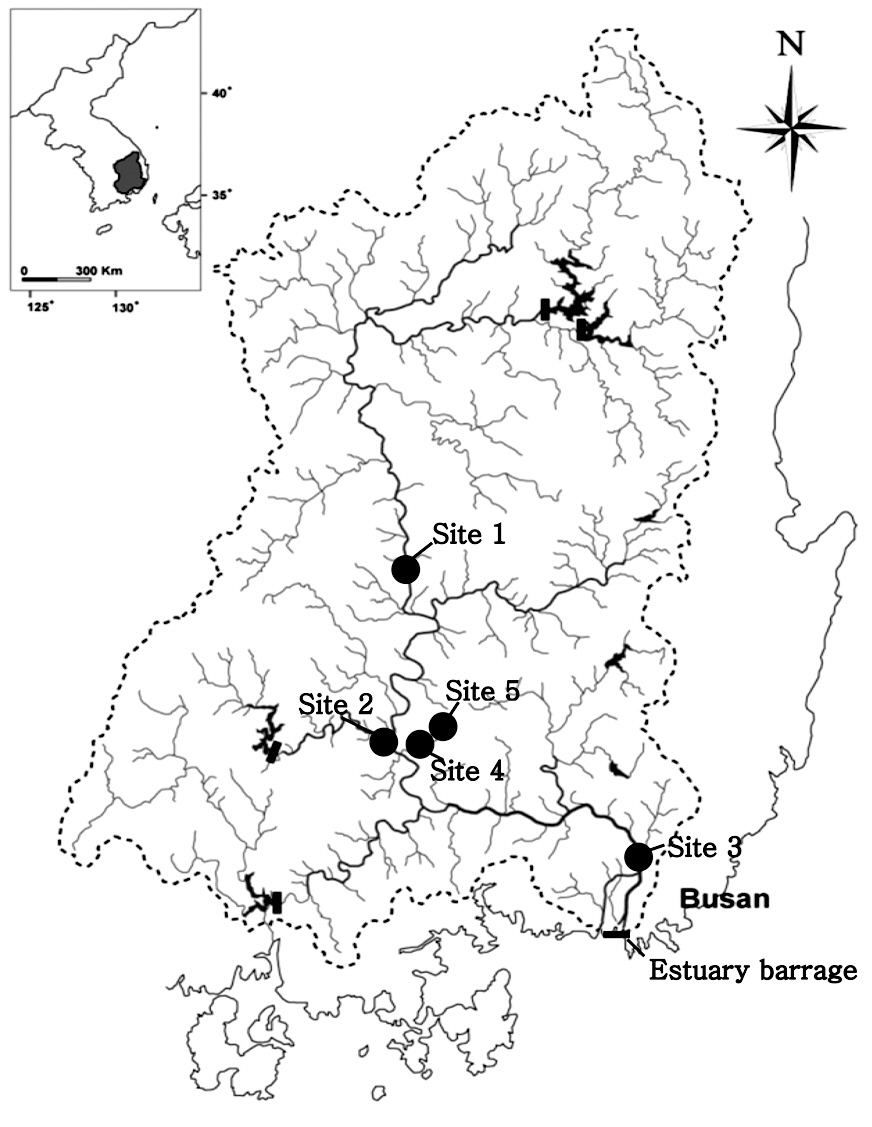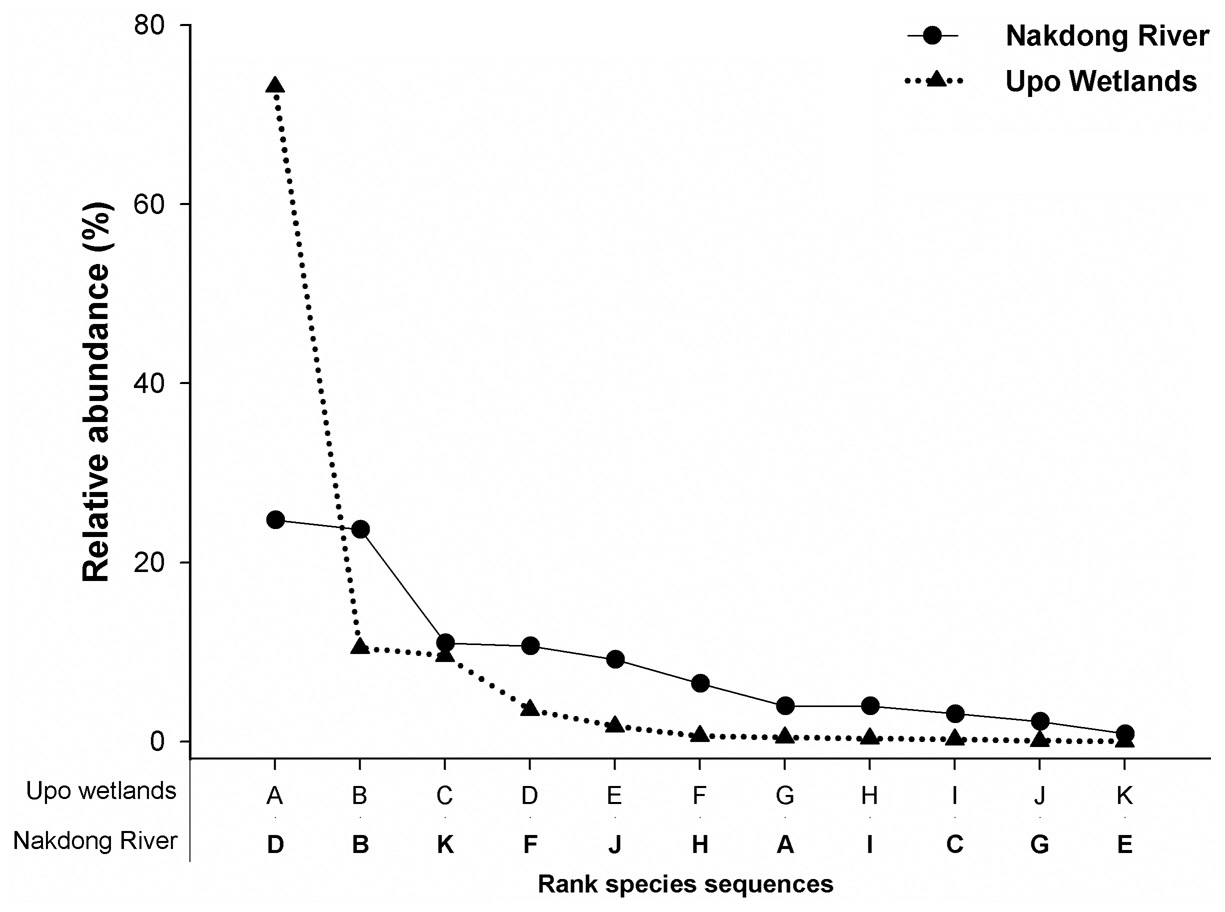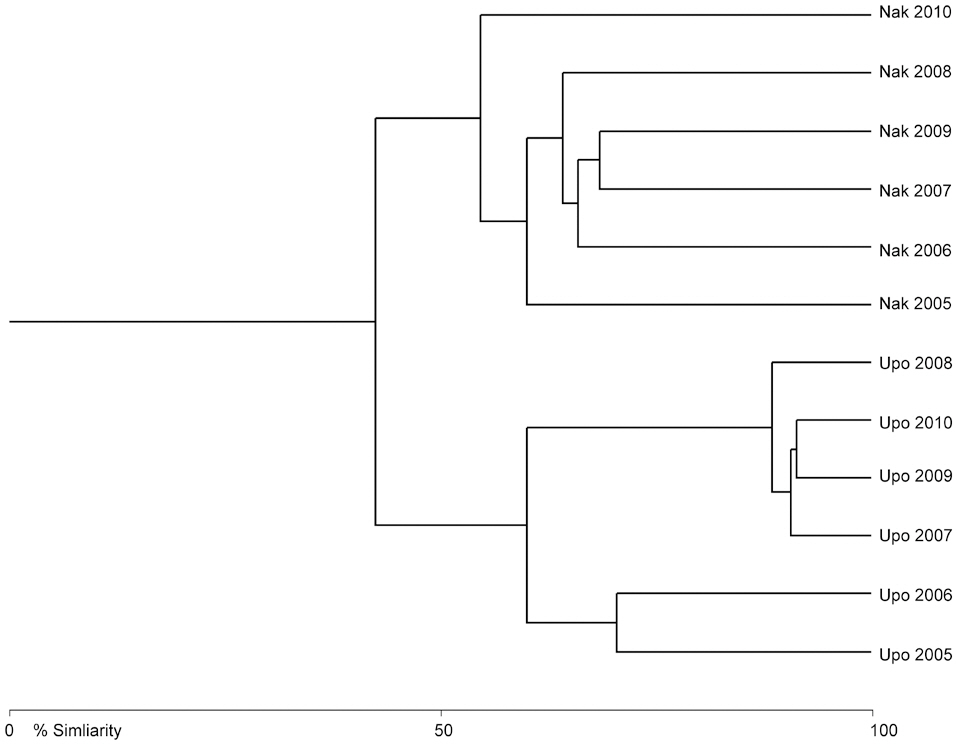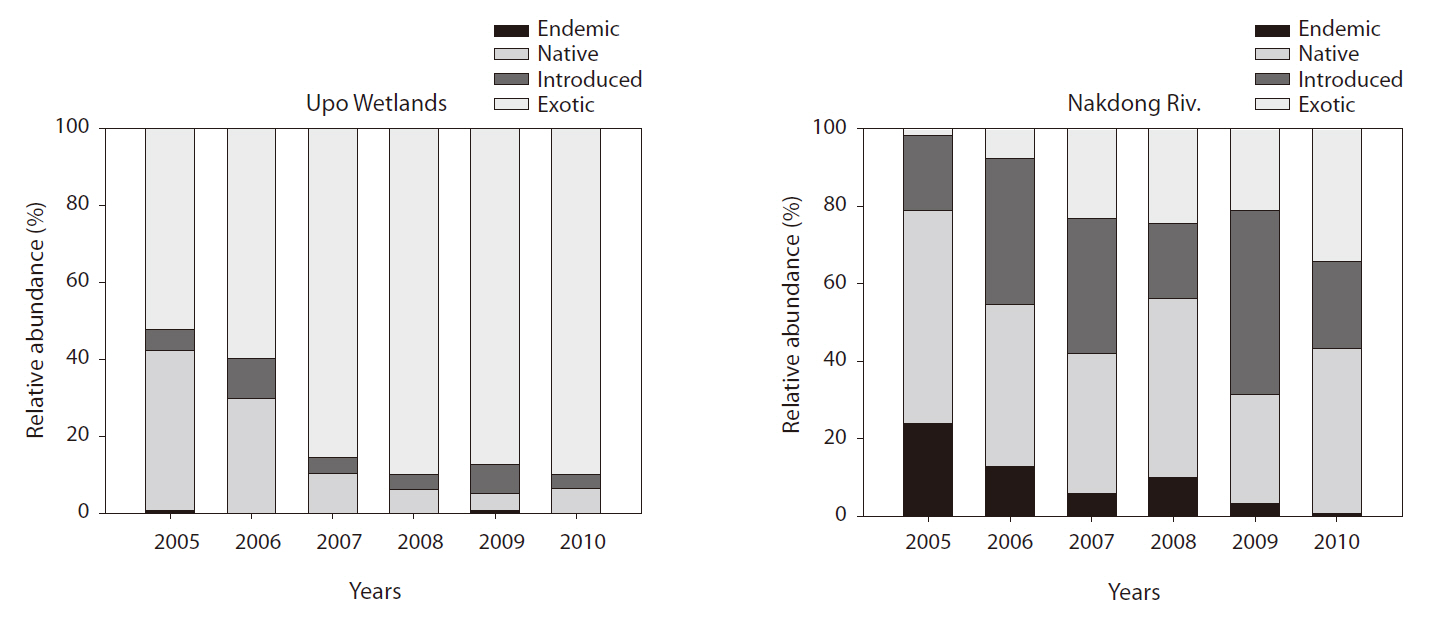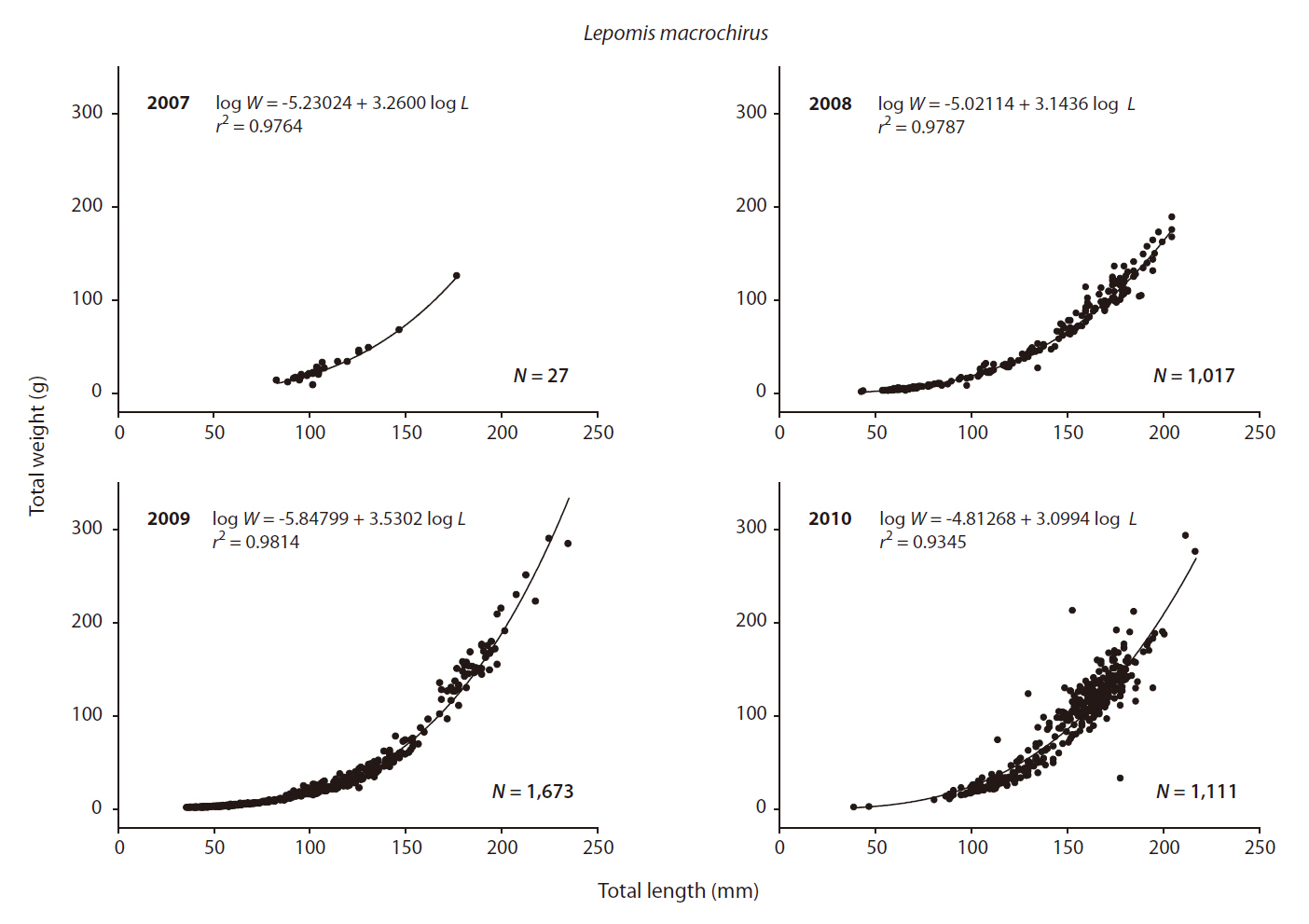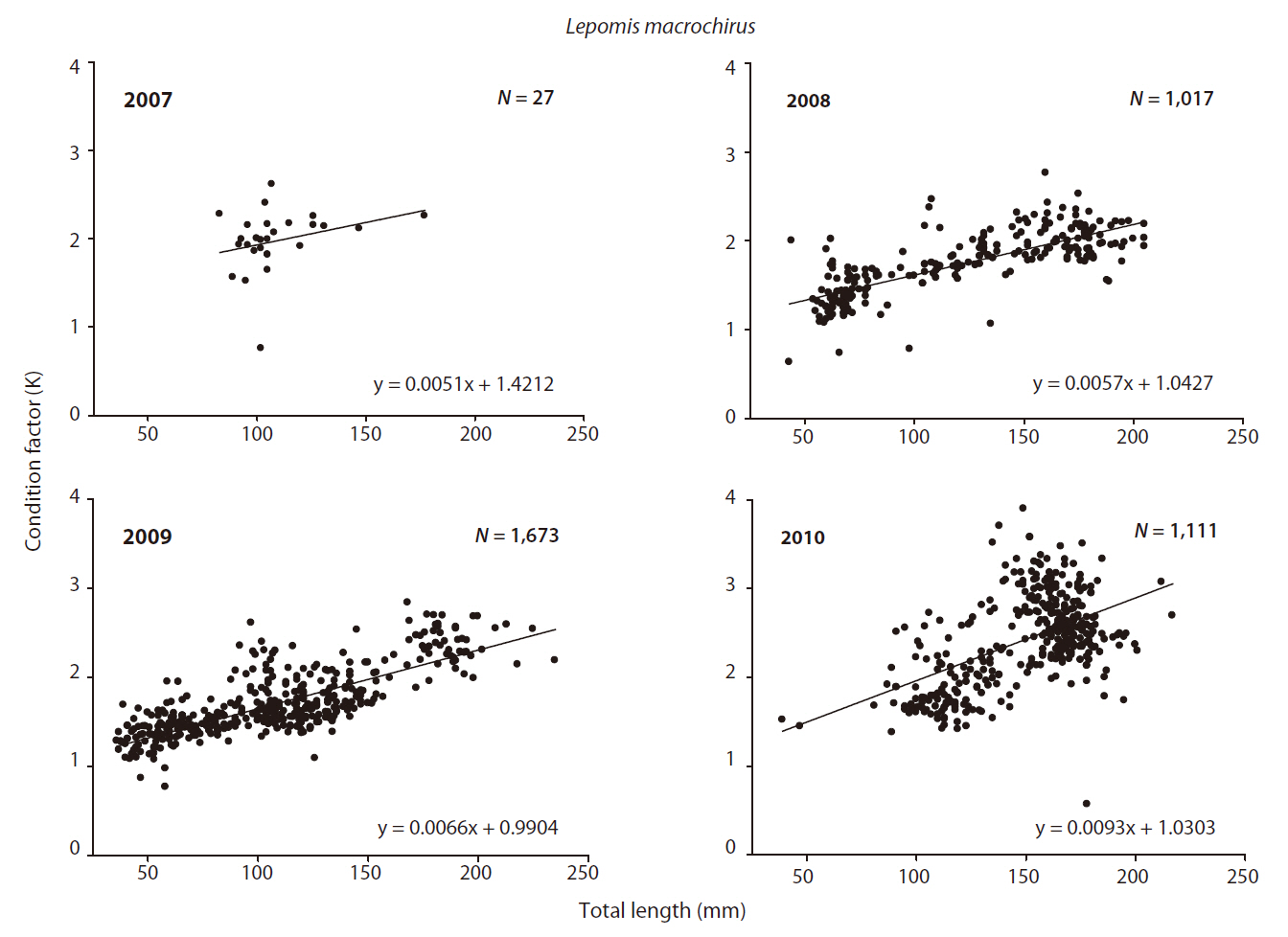



Recently, an increasing amount of research based on long-term ecological research (LTER) has been conducted.LTER is an important survey method which can detect temporal changes in ecosystem structure and function,using accumulated long-term data, regardless of ecosystem type (Turner et al. 2003). Biological long-term research has become common practice for rivers and wetlands. Accumulated data can be employed to predict changes in ecosystems resulting from global warming.LTER can also provide us with important information regarding the long-term effects of exotic species on ecosystems. The freshwater ecosystem is more vulnerable to exotic species than other ecosystems (Sala et al. 2000).Therefore, LTER-based evaluations of exotic species in freshwater ecosystems are both important and necessary.
The effect of exotic species on freshwater ecosystems varies, but we focused specifically on changes in the food-web structure caused by the presence of exotic fish.Exotic fish can cause the collapse and homogenization of the food-web or its structure (Power et al. 1996). Additionally,exotic fish introduced into a new habitat are frequently more competitive than native species (Pascual et al. 2002). With competitive exclusion, competition between species is not a limiting factor, and the increasing population of exotic fish causes a reduction in the numbers of endemic species (Angermeier 1982). The majority of introduced fish species are top predators in the food chain (Jang et al. 2006). Therefore, when introduced, these species can affect the structure of the existing fish community. Introduced or exotic species are defined as successfully reproducing organisms transported by humans into regions where they did not previously exist; this introduction of exotic species has occurred in many areas of the world, for many centuries (Baker and Stebbins 1965). The establishment of exotic species and the loss of native species ameliorates regional differences among fauna and flora, a process referred to as biotic homogenization (McKinney and Lockwood 1999); however, there are highs and lows in this effect, which depend on the environment.
The Freshwater system is divided into lotic systems and lentic systems based on environmental differences; the fish community composition in each system can differ considerably. The lotic system, because of its characteristics flow, is a dynamic environment in which fish community changes are affected by both spatial and seasonal differences (Agostinho and Zalewski 1995). Comparatively, fish adapted to a eutrophic environment dominate lentic systems. Fish communities in lentic systems appear to be generally more temporally stable than those in lotic systems (Merona 1987) because of their high habitat diversity and more stable environment. We are empirically aware of the differences in aquatic biota and of the impact of exotic species between lotic and lentic systems. However, only a relatively few studies have been conducted to evaluate the effects of exotic fish between lotic and lentic systems. Even though a large number of studies have been conducted on either native or exotic species, no long-term studies have been performed specifically addressing the effects of exotic fish between the two systems.
In this study, we evaluated the change in the annual lotic and lentic fish communities in the Nakdong River and Upo Wetlands. We also compared the impact of exotic species in the lotic and lentic systems based on the fish community. Finally, we estimated the length-weight relationship of bluegill (
The Korean Peninsula is located in far-eastern Asia, and the Nakdong River lies within the southeastern region of Korea (35-37°N, 127-129°E). The length of the river is approximately 520 km, making it the second largest river system in South Korea. Four multi-purpose dams and one estuarine barrage regulate the water flow of this river, resulting in the eutrophication observed in the Nakdong River (Ha et al. 1998). The riparian zone evidences low vegetative diversity. The river bed is composed primarily of sands. The Upo Wetlands are connected to the main channel of the Nakdong River and have been designated as a Ramsar site since 1998. In the Upo Wetlands, the riparian zone evidences high vegetative diversity (Fig. 1) (Kim et al. 2004). We conducted seasonal surveys of the fish community between 2005 and 2010. The river kilometer from estruary barrage (RK) value is calculated below.
St. 1: 35°52'53.32"N, 128°23'18.00"E (RK 190) - Nakdong River main channel
St. 2: 35°31'45.42"N, 128°21'42.04"E (RK 120) - Nakdong River main
St. 3: 35°19'52.83"N, 128°57'29.58"E (RK 19) - Nakdong River main channel
St. 4: 35°31'45.99"N, 128°23'13.64"E (added 2.5 Km from St. 2) - Upo Wetlands (It is stream connected between Nakdong River and Upo Wetlands)
St. 5: 35°33'45.74"N, 128°24'15.62"E (added 7.5 Km from St. 2) - Upo Wetlands (Mokpo Wetland)
A fixed shore net (mesh 15 × 15 mm), cast net (7 × 7 mm), and scoop-net (5 × 5 mm) were used to collect fish specimens. The fixed shore nets were set for 24 h, and the cast nets were cast 20 times per site. Approximately 100 m of river length was sampled at each site. In the Nakdong River, the cast and scoop-nets were used to collect fish specimens. In the Upo Wetlands, the fixed shore, cast, and scoop-nets were used to collect fish specimens. The collected specimens were identified and released at the study site. In cases in which exact identification was not possible, we preserved specimens in 10% formalin solution until counting, after which they were stored in 5% formalin solution. All specimens were identified according to the methods of Choi et al. (1990), Kim and Park (2002), and the classification system of Nelson (1994).
To evaluate the fish community at the study sites, the species diversity (Simpson 1949), dominance (Shannon and Weaver 1949), richness (Pielou 1966), and evenness (Margalef 1958) were calculated from the density data for various species. The Bray-Curtis dissimilarity (Bray and Curtis 1957) was used for cluster analysis. To compare the annual occurrence of fish species, we used Spearman’s correlation. The Length-weight relationship of the bluegill was calculated according to the following formula:
W = aLb
W = total weight (g), L = total length (mm), a = a constant parameter and b = an exponent parameter usually lying between 2.5 and 4.0 (Hile 1936, Martin 1949). For an ideal fish species that maintains the same shape, b = 3; however this has only occasionally been observed (Allen 1935). Generally, if parameter b is greater than 3, the fish is considered to be adapted well to its environment. The condition factor K is used to evaluate the health of fish and the fish community. The condition factor K for Bluegill was calculated using the following formula:
K = W/L3 × 105
Thirty five species of fish from 11 families were collected from the Nakdong River (site1, 2, and 3) from 2005 to 2010. Cyprinidae (relative abundance [RA] 60.1%, 21 species) was the dominant family. Centrarchidae (RA 23.0%, 2 species) was the sub-dominant family (Table 1).
[Table 1.] List of fish fauna collected during the survey
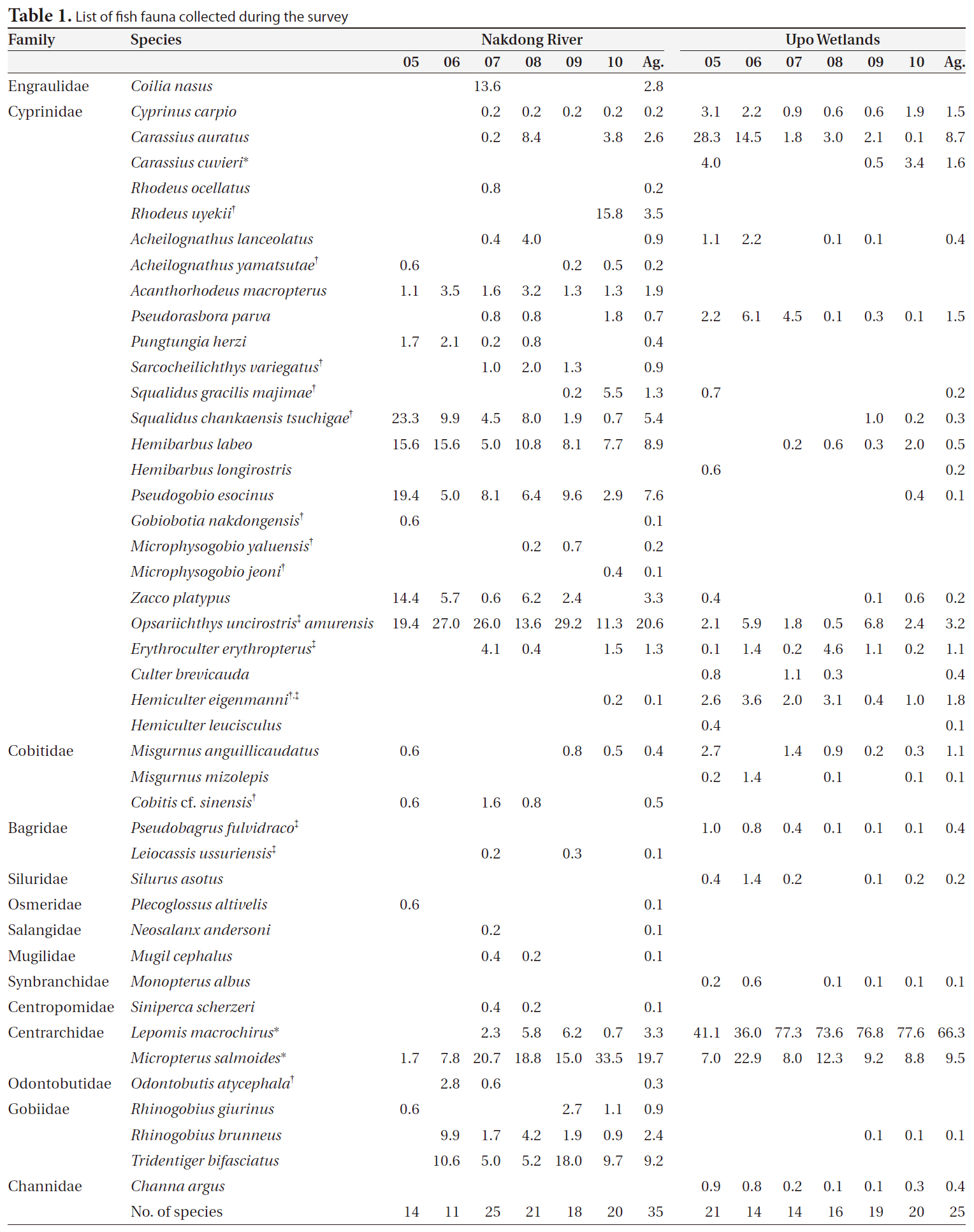
List of fish fauna collected during the survey
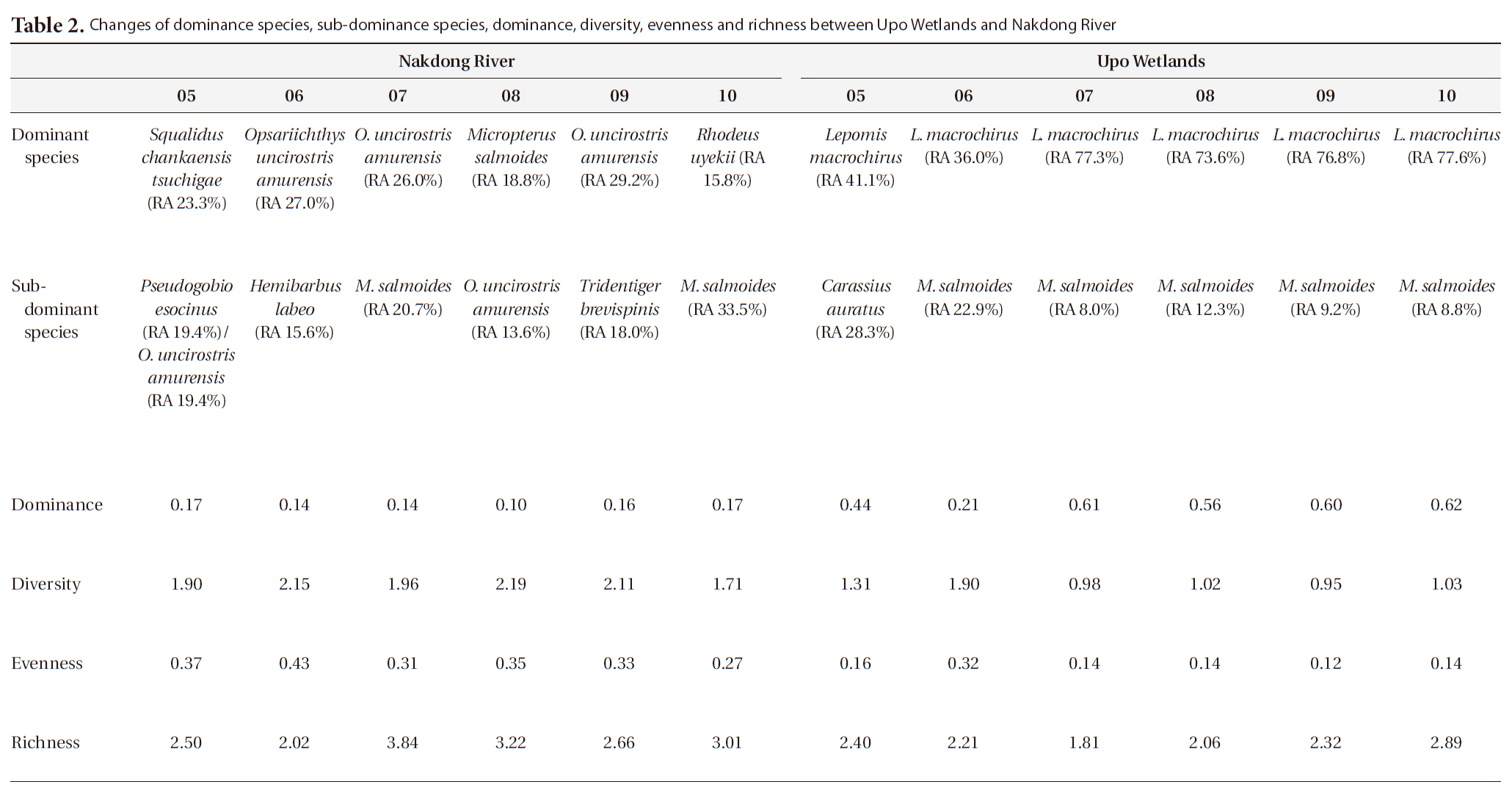
Changes of dominance species sub-dominance species dominance diversity evenness and richness between Upo Wetlands and Nakdong River
diversity index was between 1.90 and 2.19 without any marked tendencies towards increase. Evenness and richness evidenced no marked tendencies (Table 2).
In Upo Wetlands (sites 4 and 5) 25 species of fish from 8 families were collected from 2005 to 2010. Centrarchidae (RA 75.8%, 2 species) was the dominant family. Cyprinidae (RA 21.9%, 16 species) was the sub-dominant family (Table 1).
>
Fish assemblage differences between lentic and lotic system
To evaluate annual changes in fish species, we used Spearman’s correlation with the relative abundance of occurrence of fish species between the Nakdong River and Upo Wetlands. Annual changes in the fish species of the Nakdong River evidenced a positive correlation
between study years from 2005 to 2010 (Rs > 0.322, N = 44, P < 0.05). In the Upo Wetlands, we also observed the same results (Rs > 0.604, N = 44, P < 0.05). Fig. 3 shows the results of the cluster analysis of the Nakdong River and Upo Wetlands. The lentic and lotic sites clustered out independently of one another. The next cut level split the lentic and lotic sites up according to year, with the years being clustered according to environmental responses. For the Nakdong River, 2005 and 2010 both separate out individually, with 2006-2009 being clustered together. By way of contrast, in the cluster analysis for the Upo Wetlands, the years 2005 and 2006 clustered out independently and 2007-2009 were clustered together (Fig. 3).
The exotic species assessed herein included
As a result of the length-weight relationship for L.
Every year’s parameter b exceeded 3 (Fig. 5). According to the length of L.
Cluster analysis results were used to classify and compare the fish communities in a lotic (Nakdong River) and a lentic (Upo Wetlands) environments, which are connected environments. Species richness was relatively high in the lentic system because of the addition of pool species and an increase in habitat diversity (Kuehne 1962). Annual changes in the fish community did not differ significantly between the river and wetlands. Fish communities in lentic systems appear more temporally stable relative to lotic systems (Merona 1987). However, the results of
this study showed that this stability was more vulnerable to the introduction of exotic fish. L.
According to the results of this study, the exotic species impact of both lentic and lotic systems but the impact of exotic species in lentic systems was greater than that of lotic systems. Unfortunately, our river channels are undergoing a general transformation from lotic to lentic systems. S. Korea is an industrialized nation with increasing economic growth and accelerating production. These changes are accompanied by the channelization of rivers, the construction of levees that play a role in the disconnection of wetlands from the rivers, and the reclamation of wetlands for land development purposes. As a consequence, the river and wetlands have been modified physically, chemically, and biologically (Joo et al. 1997), and this is an ongoing modification. One example of this is the current Four Rivers project, which involves the modification of rivers by altering their substrate, morphology, and composition via the construction of 9 large dikes in the Nakdong River channel.

